Metasequoia glyptostroboides
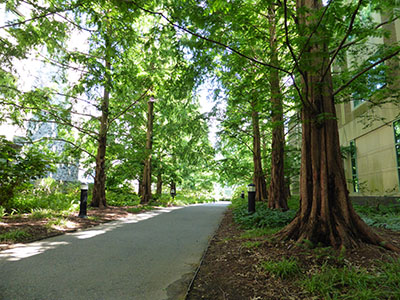 On the way to my first Woody Plant Conference at Swarthmore College last year, I was awe-struck by the Metasequoia Allée as I walked through it and ran my hands through the trees’ feathery needles. While doing so, flashbacks of my college botany class came to mind. I could remember my professor sharing the story of the discovery of this ancient species that was once thought to be extinct.
On the way to my first Woody Plant Conference at Swarthmore College last year, I was awe-struck by the Metasequoia Allée as I walked through it and ran my hands through the trees’ feathery needles. While doing so, flashbacks of my college botany class came to mind. I could remember my professor sharing the story of the discovery of this ancient species that was once thought to be extinct.
Dating as far back as 65 million years, Metasequoia glyptostroboides is well-represented in Northern Hemisphere fossil collections; however, no living specimens were found until Chan Wang of China’s National Bureau of Forest Research at Chongqi came across it in Moudao, a valley of central China. Several years later, H. H. Hu, a Chinese botanist, made the connection between Metasequoia fossil records and Wang’s discovery. Excitement brewed throughout the world, and Arnold Arboretum of Harvard University conducted the first expedition to the discovery site to collect Metasequoia glyptostroboides seeds that were later dispersed internationally.
Today, you can find Metasequoia glyptostroboides growing in countless public gardens and arboreta around the world. And if you look at your surroundings as you walk or drive, you’ll be amazed by how many people are growing this “living fossil” in their own yards. These trees are easy to spot from afar due to their straight trunk and pyramidal stature.
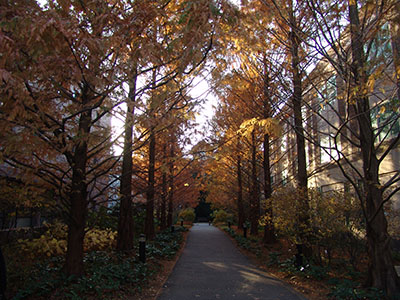
Each fall, the needles of Metasequoia glyptostroboides will change from vibrant green to a brilliant bronze color before they are shed for the winter. photo credit: Scott Arboretum Archives
When you get closer, you’ll find that this coniferous (cone-bearing) species produces deciduous needles that are soft to the touch. Each fall, the needles of Metasequoia glyptostroboides will change from vibrant green to a brilliant bronze color before they are shed for the winter.
Since this species is fairly new to us, we are still learning more about Metasequoia glyptostroboides as we watch specimens grow. As I stated before, Metasequoia glyptostroboides is known for its pyramidal structure. However, we are beginning to find that some lose this characteristic silhouette, becoming more rounded as they age and spread. This is similar to what can be seen in older baldcypresses (Taxodium distichum), a species native to the US that is a deciduous conifer and belongs to the Cupressaceae or cypress family (just like Metasequoia glyptostroboides). I have also found that some websites indicate that Metasequoia glyptostroboides will reach a mature height of 70-100 feet tall.
However, we have been finding individuals, even under the age of 50 years old, that have exceeded this height already. Older specimens in China range from 115-130 feet, and some have reached 160 feet! Just like the height, the websites that state 15-25 feet for width are underestimating the mature spread of Metasequoia glyptostroboides. Ancient specimens, especially those that round as they age, have well exceeded this mark.
Considered a Gold Medal plant by the Pennsylvania Horticultural Society, Metasequoia glyptostroboides has several characteristics that would make it an appealing addition to your garden. The leaves are truly unique, and I never get tired of running my fingers through the soft foliage. In the spring, the needles emerge as an electrifying lemon-lime color, which then mature to a vibrant, true-green shade.
The trunk forms deep grooves and has reddish bark that peels in strips. This adds a unique texture and interest, especially in the winter months after all the foliage has been shed.
Because Metasequoia glyptostroboides is monecious, it bears both female and male cones on an individual plant. The male cones are light brown and arranged in hanging clusters, while the female cones are larger (1/2”-1”) and solitary with fused scales. They emerge light green and mature to a light brown in the fall.
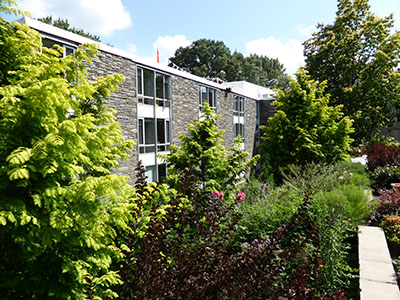
This planting of young Metasequoia glytostroboides 'Ogon' is located below the Wister Center. photo credit: C. Morrissey
There are several cultivars of Metasequoia glyptostroboides on the market, ranging from cultivars that play on foliage color to dwarf cultivars. For the lovers of chartreuse foliage, ‘Ogon’ is a great choice and examples can be seen on Parrish lawn and lining the gravel drive next to the Wister Center. Unlike some other plants with chartreuse leaves, this fantastic foliage color remains vibrant even through intense heat and sun exposure. In the fall, the needles turn deep gold before being shed for the winter. Through my research, I found conflicting information regarding the mature height; however, it seems this cultivar retained the fast growth rate of the straight species.
Now, if you’re like me, you’re probably itching to grow one of these yourself. Seeds are easy to obtain and can be rather cheap. Since Metasequoia glyptostroboides has a fast growth rate, growing from seed is a great option. During spring or fall, just sprinkle the seeds over soil of an area that will receive full sun and has well-drained soil (Although not necessary, acidic soil is another condition that will allow it to thrive.).However, if you’re looking to expedite the process, you can find container, bare-root, and ball-and-burlap specimens at certain nurseries and garden centers. Purchasing online is always an option if you can’t find it at a local vendor.
Although my personal interest leans toward native habitat gardens, I know that I will have to find a place for Metasequoia glyptostroboides in my future yard, purely because this species is rich with historical and botanical interest!





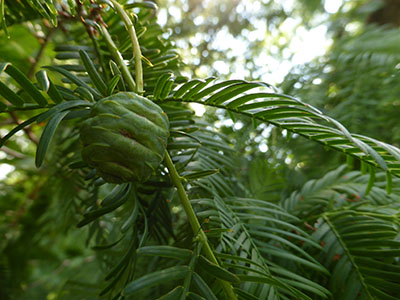
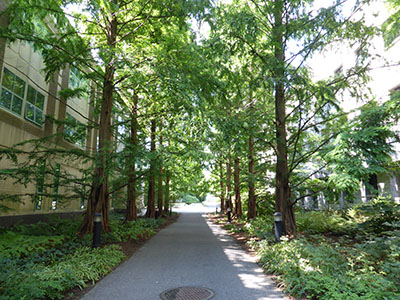
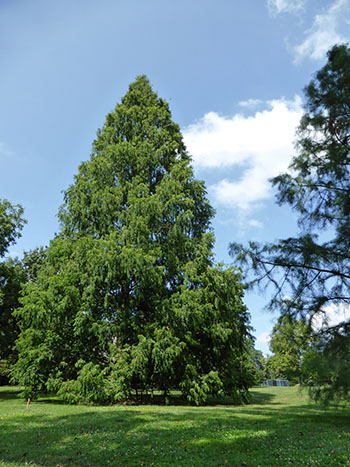
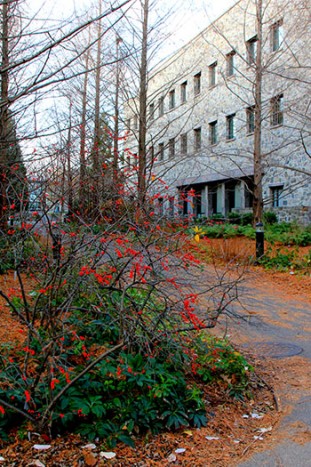
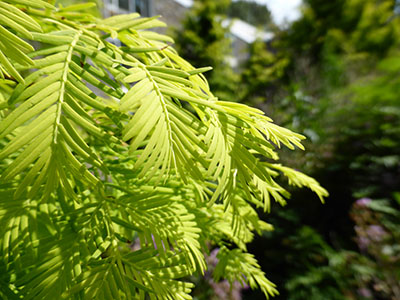
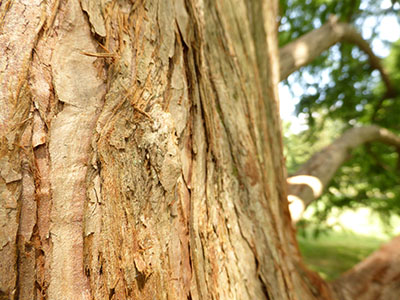

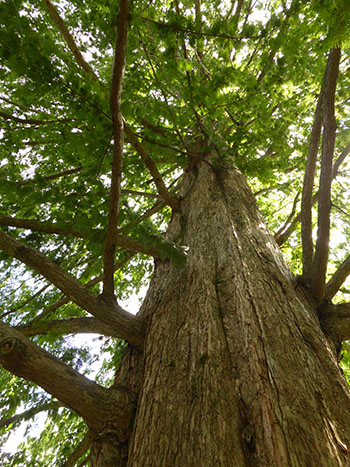
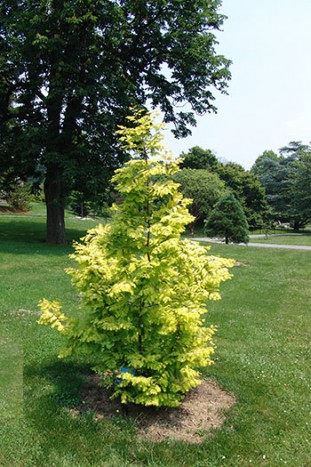
No Comments